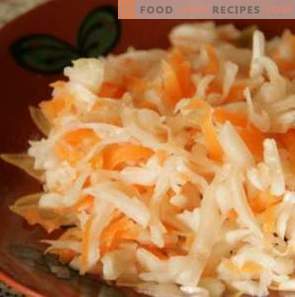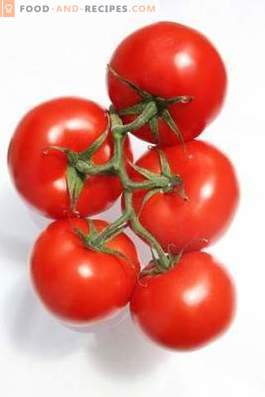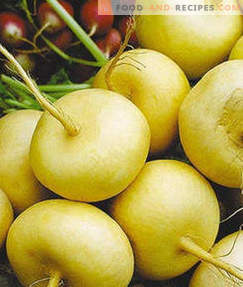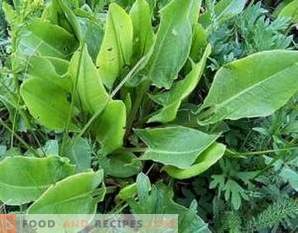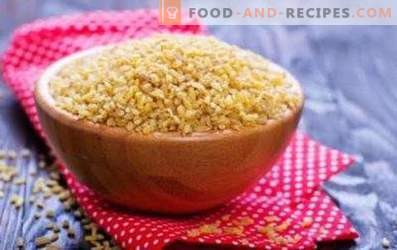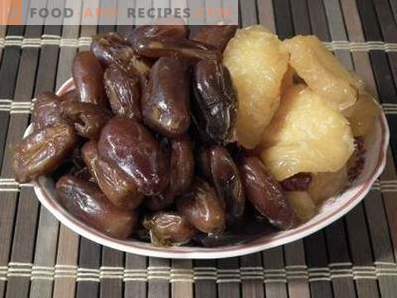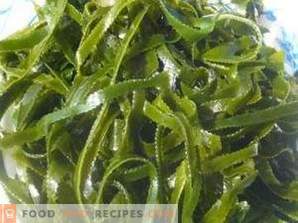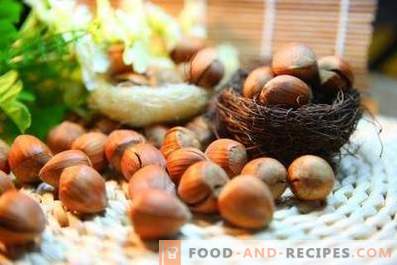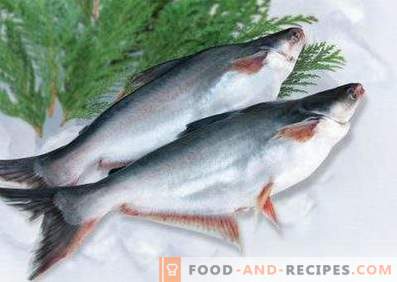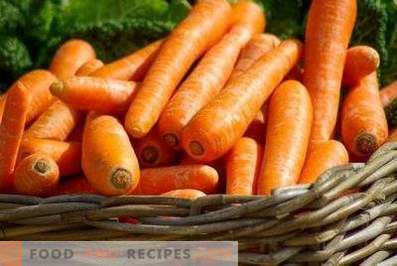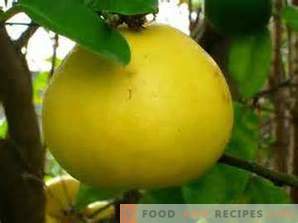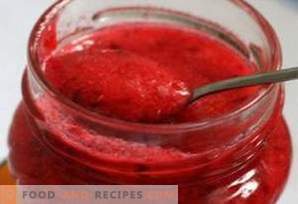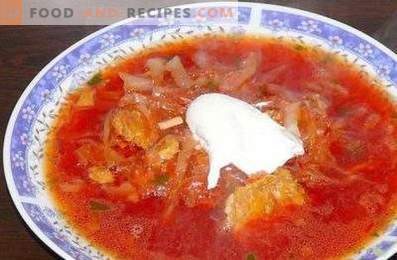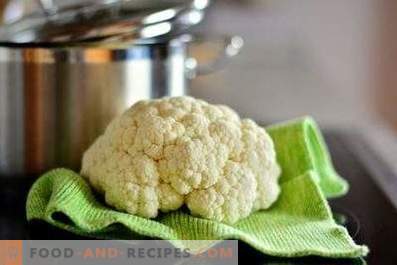
Cauliflower is a vegetable plant that forms dense edible “heads” of immature peduncles and inflorescences. The homeland of culture - the Mediterranean: it is considered that this species was bred by cabbage Syrian peasants. In the wild plant does not occur in any of the countries of the world.
For more than a thousand years, cauliflower has been cultivated only in Syrian territory. However, in the XII century, the Arabs brought the seeds of the plant to Spain and Cyprus. Thanks to this culture quickly spread throughout Europe. In the XIV century, the plant began to be cultivated in Holland, England, Italy and France.
On the territory of the CIS cauliflower appeared only in the XVII century. Dishes from this culture have long been considered delicacies and, by virtue of their high prices, only a few were available. However, after the Russian scientist, botanist, and agronomist A.T. Bolotov developed several cold-resistant plant varieties in the 18th century, the prices for this vegetable dropped sharply.
Nowadays, the United States is considered the leading producer of cauliflower. In addition, the culture is actively grown in Europe, South America, Japan and China. In the CIS, the plant accounts for no more than 1% of all cabbage crops.
Botanical description of cauliflower
Cauliflower is an annual vegetable crop of the cabbage (cruciferous) family. The plant has a fibrous root and a thick cylindrical stem, reaching 70 cm in height. Green or greenish-gray leaves of the culture sit on thick petioles from 50 to 400 mm long. Leaf plates have ovate or truncated elliptical shape.
In cooking and traditional medicine, fleshy flower stalks are used to form dense round heads of white, milky, yellowish, purple or green flowers in the budding phase. Cauliflower fruit is an elongated multi-seed cylindrical pod.
How to choose, store and cook cauliflower?
A fresh cauliflower head should be dense and heavy. In addition, indicators of its quality are:
- no plaque, dirt, traces of mechanical damage;
- uniform color without dark patches;
- the presence of fresh green leaves around the head;
- tight fit of peduncles forming a head, to each other;
- fresh (not dried and not swollen with moisture) cut;
- barely noticeable pleasant grassy aroma;
- the absence of insects and slugs on the leaves and inflorescences.
Cauliflower is allowed to be stored in the refrigerator for 8-10 days. When frozen, the vegetable retains its nutritional properties for much longer - up to 8 months.
Cauliflower is eaten marinated, boiled, baked, stewed, salted or fried. The thickened flower stalks of the plant are used for making mashed potatoes, soups, casseroles, vegetable broths and meatballs, salads, baking fillings. In addition, cauliflower is included in the composition of home canned vegetables.
Nutritional value of cauliflower
Nutritional value cauliflower (per 100 g):
- fats - 0, 298 g;
- proteins - 1, 814 g;
- carbohydrates - 4, 903 g;
- fiber - 1, 977 g;
- water - 91, 874 g;
- ash - 0.775 g;
- sugar - 1, 909 g.
As part of the vegetable - a complex of essential amino acids, which includes threonine, histidine, lysine, valine, leucine, phenylalanine, arginine, isoleucine, methionine and tryptophan. In addition, cauliflower contains essential amino acids, phytosterols and fatty acids.
Vitamins in cauliflower
100 g of cauliflower contains the following vitamins:
- B4, choline - 44, 216 mg;
- B6, pyridoxine - 0, 182 mg;
- C, ascorbic acid - 47, 934 mg;
- lutein and zeaxanthin - 0, 927 mcg;
- B1, thiamine - 0, 047 mg;
- H, biotin - 16, 933 mkg;
- B9, folic acid - 56, 017 mkg;
- PP, nicotinic acid - 0, 503 mg;
- B2, riboflavin - 0, 058 mg;
- E, tocopherols and tocotrienols - 0, 076 mg;
- B5, pantothenate - 0.664 mg.
In addition, the product is a source of vitamin K or phylloquinone. 100 g of cauliflower contains 15, 423 μg of this compound.
Cauliflower Calories
100 g of raw cauliflower contains 24, 512 kcal. After cooking, steaming or stewing, the energy value of this product increases to 29, 013 kcal per 100 g. The caloric content of 100 g of pickled or salted cauliflower is 28, 633 kcal, fried - 148, 701 kcal, baked - 27, 844 kcal.
Useful items in cauliflower
Trace elements in 100 g of cauliflower:
- zinc - 0, 267 mg;
- fluorine - 0, 916 mkg;
- selenium - 0, 577 mkg;
- copper - 38, 594 mkg;
- manganese - 0, 152 mg;
- iron - 0 416 mg.
Macroelements per 100 g of product:
- phosphorus - 43, 162 mg;
- sodium - 29, 074 mg;
- magnesium - 14, 833 mg;
- calcium - 21, 308 mg;
- Potassium - 298, 523 mg.
Use of cauliflower
- Cauliflower is a rich source of vitamins. With regular consumption of this product reduces the risk of developing beriberi.
- Cauliflower is the leader in biotin content among widely available foods. Entering the body with food, this vitamin prevents the development of inflammatory processes in the skin, reduces the likelihood of seborrhea.
- In cauliflower there is a complex of substances that minimize the risk of cancer of the prostate in men, breast cancers in women, and cancer of the intestines in both sexes.
- The compounds present in the composition of this product accelerate the excretion of toxins, slags and poisons, stimulate the synthesis of digestive juice, improve appetite, promote the absorption of beneficial elements.
- With the inclusion of cauliflower in the diet of a pregnant woman, the risk of disturbances in the development of the fetus is reduced.
- The composition of cauliflower includes substances that improve blood microcirculation, strengthen blood vessels and heart muscle, stabilize the heart rhythm, help eliminate excess cholesterol from the body, prevent the formation of atherosclerotic deposits, normalize blood clotting. Dishes from this product significantly reduce the likelihood of developing heart disease.
- Potassium and other nutrients that enter the body when using cauliflower help to remove excess fluid from the body, normalize the water-salt balance, prevent the occurrence of edema.
- Antioxidant compounds that are rich in cauliflower, not only help prevent the development of cancer, but also slow down the processes associated with aging, accelerate the regeneration of damaged tissues.
- Cauliflower is a source of nutrients that accelerate metabolic processes in the body. Regular consumption of dishes from this product indirectly contributes to weight loss.
- Vitamins of group B contained in cauliflower strengthen the nervous system and help to avoid disruptions in its work. People who include this vegetable in the diet twice a week and more often tolerate psychoemotional overloads and stressful situations, rarely face mood swings and depression, sleep soundly and comfortably, feel awake and full of energy throughout the day.
Damage to cauliflower
- Cauliflower can provoke the development of allergic reactions. People who have food allergies need to be careful when including dishes from this product in the menu.
- Cauliflower is contraindicated for persons suffering from acute enterocolitis, gastric or intestinal ulcers, intestinal cramps, and diseases that develop on the background of excess acidity of gastric juice. At the use of this product epithelial tissues of the gastrointestinal tract are irritated, pain increases, the general condition of the patient worsens.
- Cauliflower and dishes prepared from it are contraindicated for people who have recently undergone surgery in the chest or peritoneum.
- In dishes made from cauliflower, a lot of purines. Their abuse can trigger recurrence of the disease in people suffering from gout.
- It has been proven that cauliflower contains compounds that can adversely affect the functioning of the thyroid gland and provoke the development of goiter. People at risk of exchange failure should limit the amount of this vegetable in their diet.
- Abuse of cauliflower can aggravate the condition of people suffering from hypertension or kidney disease.

